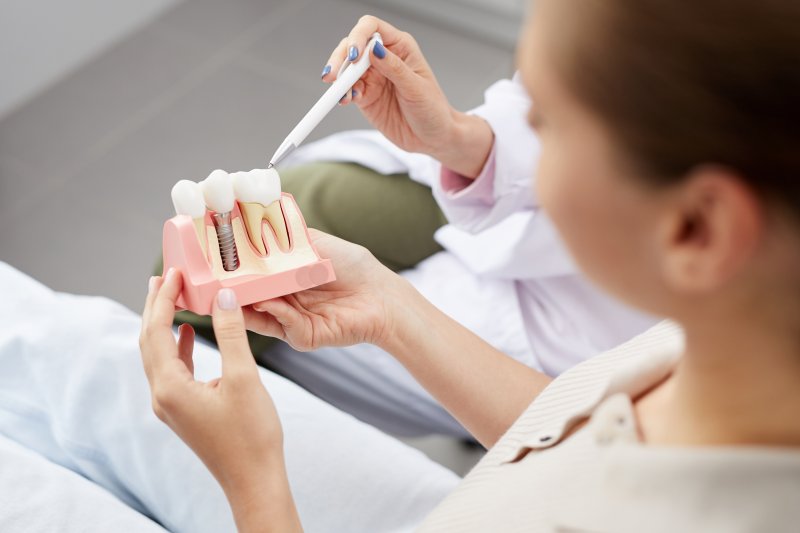Dental Implants 101: A Guide to Key Terms You Should Know
September 24, 2021

If you have missing teeth, you’re probably researching your options to restore a fully functioning grin. Well, dental implants are an excellent solution to consider! They help patients eat, speak, and smile with complete confidence once again. Are you interested in this method of tooth replacement? The first step on your journey is a dental implant consultation. At this initial visit, your dentist may throw around some unfamiliar words. To help you better understand the process, we’ve compiled a list of dental implant terms you should know.
Dental Implant
A dental implant (or a fixture) is a medical device that is surgically inserted into the jawbone. It’s designed to support a dental prosthesis like a bridge, crown, denture, or other prosthetic. The implant fuses with the bone to mimic the missing tooth root and create a lasting foundation for an artificial tooth.
Abutment
An abutment is a connector that your dentist will build into or attach to the top of your dental implant. It’s a crucial part that keeps the final restoration (crown, bridge, denture, or another dental prosthetic) firmly in place.
Dentures
Dentures are one of the most traditional solutions for missing teeth. However, patients don’t have the same durable and stable results with dentures as with implants. Some dentures are removable for storage and cleaning, while others (like implant-retained dentures) are permanently attached to the mouth.
Crown
Have you ever broken or lost a tooth because of infection, decay, or injury? You’re probably familiar with dental crowns. A crown, also known as a cap, is placed over a weakened or damaged tooth to protect it from further damage. It can also be attached to an abutment to restore the visible portion of your tooth.
Osseointegration
This natural process allows the implant to fuse with the jawbone, improving the strength between the bone and load-bearing implant. It happens when the bone cells attach themselves directly to the titanium surface, locking the implant directly into the jawbone. The term ‘osseointegration’ comes from Greek and Latin words meaning “bone” and “to make whole”.
Titanium
Titanium is the most popular material used for dental implants, mainly because it’s highly durable and functional. Plus, very few people are allergic to this metal. One of its benefits is its ability to fuse with the bone and grow into the implant as it heals (osseointegration).
Zirconia
For patients who are allergic to titanium, zirconia is an excellent alternative. This implant material is an ideal choice for those with a history of recessed gums because it’s not as noticeable. Since zirconia implants do have prosthetic connections, the risk of bacteria growth is much lower.
With the help of this guide, you can better understand what your dentist tells you during your consultation. That way, you’ll be fully prepared and ready to start your dental implant journey!
About the Author
Dr. Laura Philipps is passionate about helping others achieve optimal oral health. She earned her Doctor of Dental Medicine at Tufts University and is currently an active member of the American Dental Association, Texas Dental Association, and more. Dr. Philipps takes numerous hours of continuing education courses every year to expand her skillset and provide patients with the best treatment possible. If you’re ready to start your journey towards a full smile, visit our website or call (432) 570-4433 to schedule a dental implant consultation with Dr. Philipps.
No Comments
No comments yet.
RSS feed for comments on this post.
Sorry, the comment form is closed at this time.
